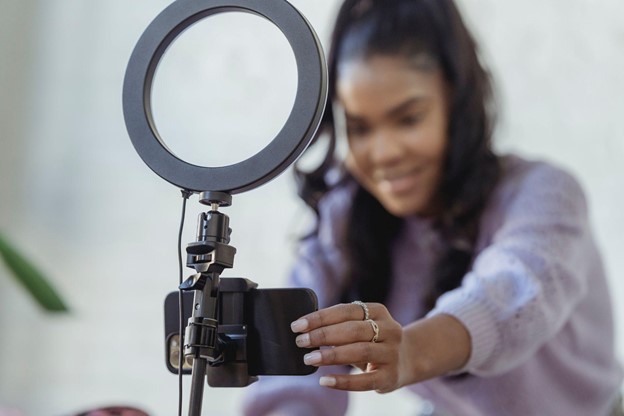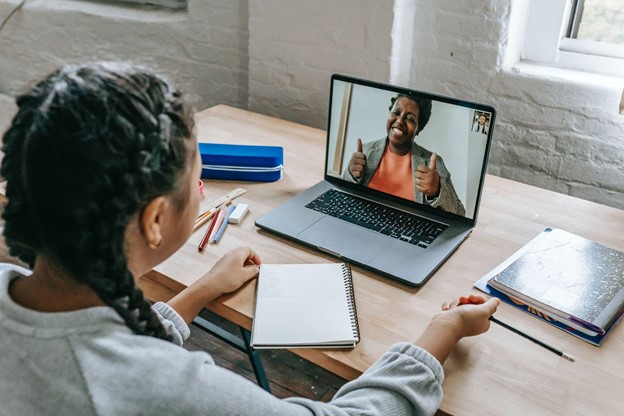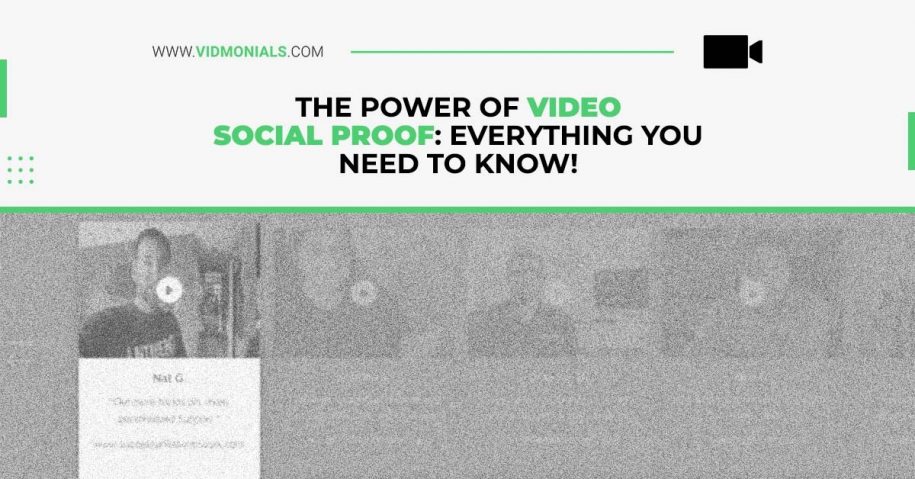Understanding the concept of “social proof”
This section will examine the concept of social proof and the various forms it takes.
We are all affected by the psychological phenomena known as “social proof.”
To learn how to behave in a particular situation, we pay attention to the actions of those around us.
Put another way; it relies on the assumption that those around us know better than we do about acting in any particular situation.
The “Godfather of Influence,” Robert B. Cialdini, is widely regarded as the best authority on this topic because of his extensive research into the psychology of influence.
When it comes to determining what is right or wrong, social proof implies that we use the opinions of others as a guide.
In particular, the idea applies to our definition of correct behavior. We believe action is right if we observe others doing it in the same situation.
If someone else is doing something, we are more inclined to believe that we should do the same.
You’ll learn:
- The impact of video social proof.
- Be able to identify and utilize a variety of video social proof techniques.
- Make your landing page (and all other pages) more effective by boosting conversions.
- Make more money for your company using video social proof.
Early Studies on the Concept of Social Proof

All of Caldini’s studies on social proof aren’t the only ones that have been done on the topic.
1. Sherif, Muzafer: A Study of Certain Social Factors in the Perception (1935)
Sherif set out to discover how people view their surroundings based on their patterns of interpreting the world.
Individuals’ cultural groups play a significant effect in interpreting social events, taking this into account.
Sherif wanted to know how the group identity of individuals would influence their actions.
In the past, it was widely assumed that only the individual’s internal factors (such as their drive, attitude, or emotional state) were influencing their behavior.
He uses the way different societies view time as an example to support his thesis.
There are many different ways to measure time in the Western world, from seconds and minutes to hours and years.
However, a tribe living in the Andamans uses olfactory cues to plan their lives.
As trees and lianas bloom at different times of the year, they can sense the passage of time by sniffing the air.
Sherif conducted a study in which he asked participants to assess the speed and direction.
Individuals were asked to estimate these parameters, and then groups of people were asked to evaluate them.
According to his research, people’s perceptions of a movement change when they’re involved in a group.
In terms of sales and marketing, what does this have to do with it?
The social group shapes each one of the decisions we identify with. For marketing campaigns, this should be considered.
2. Sophocles Asch: Experiments in Conformity (1951)
When Asch was working in psychology, he spent his time figuring out how people’s beliefs and attitudes changed when they succumbed or defied the majority.
Studies on task importance, age, gender, and culture on conformity continue to apply his methodology.
The line experiment, in which participants were instructed to do simple “perceptual” tasks, is the most well-known.
There was only one real subject in the experiment, and everyone else was playing a role.
The patient had no idea that the people around him were merely playing a part.
As a group, they had to identify which one of the three (A, B, or C) matched the left-hand reference line to proceed.
What if everyone who came before you said that they believe A is correct with a straight face?
Actors and subjects alternated whose answers were given first, and the researchers discovered that issues which were the last to speak were more ready to accept the views of others, even when they knew they were wrong.
It’s vital to keep in mind, though, when employing social proof, that if you can get the public on your side, others would probably do the same. To convince potential customers that you are a trustworthy business, you should include customer testimonials that feature a few people.
Read: Gain Instant Reputation with Genuine And Compelling Video Social Proof
Examples of Different Types of Video Social Proofs

There are many sorts of video social proof and examples of social proof, so let’s move on to that.
Using any social proof is all about giving your potential clients additional reasons to believe in your business and erasing any doubts they may have about your legitimacy.
Time to get started, shall we?
1. Video Social Proof from an expert’s network
We also trust experts and competent leaders in our field.
Increased trust is gained by including expert video social proof on your website.
To grow their firm, many people look to industry leaders for inspiration.
Nowadays, it’s standard practice to include the logos of well-known firms on one’s website.
There is no harm in having them present, but today’s consumers are growing more demanding and critical about how and why they use your product or service.
It’s no secret that Google is a significant participant in the market, but instead of merely displaying their logo, describe the services they provide on your site and the kinds of outcomes they’ve accomplished.
Your website could benefit from adding a key employee and their thoughts on you to provide social proof in the marketing.
Obtaining video testimonies of this caliber may seem complicated, but we are here to assist you.
Using Vidmonials, you’ll be able to get the video social proof that you might receive via email to be automatically gathered and published on your website without bothering your high-profile customers with review requests.
Interested in finding out more? Get started today by scheduling a brief demo to learn how to use your customers’ positive remarks to develop your brand.
2. Video Social proof from the celebrities

Many of us want to look and act like the celebrities we like.
In some circumstances, they also act as authority figures.
Despite this, we place a high value on celebrities and associate them with positive feelings.
For a (paid) cooperation with a celebrity, pitch your product or service to them and see if they have a suitable audience for it among their fans.
Naturally, if customers advertise your goods or service, for example, in Instagram stories, it works the best because they enjoyed it so much.
There are a few options here: invite them to do honest product evaluations with your brand’s hashtag or develop your own.
There is a high probability that their social impact will lead to more people at least talking about you if you get them talking about you in a positive light.
It is common for celebrities to have many followers, which makes social proof a powerful marketing tool.
3. Video Social Proof by Actual Users
In user social proof, success stories of all kinds are included. If you write them, they can count as case studies.
If your customers make videos or write about their experiences with your products or services, this is User Generated Content (UGC).
A growing number of businesses are embracing user-generated content (UGC) by offering incentives for their customers to produce videos, blog entries, and user reviews that may be utilized in marketing efforts.
Each social media site can be utilized to reach the social networks of the people who posted the content and new audiences by using user social proof.
4. Your Friends’ Advice Is Priceless
We all rely on the wisdom of our loved ones, friends, and coworkers. If someone offers a fascinating story about the experiences of our neighbors’ cousins, we tend to believe them.
We believe we have common interests with these people because of our solid emotional ties; therefore, we are more likely to feel what they say about a product or service than others.
Increasing your online visibility is as simple as asking your existing clientele to post a favorable review about their experience with your business on their social media accounts.
Utilize review services that permit your reviewers to post their thoughts on social media simultaneously.
Have you ever shared the total number of times other people have shared their stories? Encourage others to do the same by demonstrating your success.
Another type of social proof is tied to the wisdom of the multitude and personal relationships.
5. Negative Video Social Proof

Negative social proof refers to using social evidence to achieve a purpose that backfires.
In other words, people behave in the exact opposite way to what you expected them to.
For instance, if you want your post to receive a large number of social media shares, you might write:
“It would be tremendously appreciated if you could spread the word about our experience.”
If they don’t share it, it’s a safe bet that they won’t either. Why? For the simple reason that “most people” aren’t sharing it either.
Petrified wood theft was a major issue in the Arizona Petrified Forest, where Robert Cialdini, Steve Martin, and Noah Goldstein undertook an experiment to discover this occurrence.
Two separate signs were put up in two distinct park zones, while the third zone was left bare to serve as the “control group.”
The sign for the first zone read:
Petrified wood should not be removed from the park to preserve its natural state.
The next sign read:
The Petrified Forest has been altered by the removal of petrified wood by visitors in the past.
Because of this, thefts in Zone 2 were three times as frequent as they were in Zone 1.
Finally, it’s critical to determine which type of video social proof is most effective for your company.
One of the best ways to use video social proof in your marketing is to solicit reviews and testimonials from current customers.
Increase your conversions by posting this to your social media accounts and website pages, such as your pricing and landing pages.
Book a demo with us if you require a system to automate the gathering and publication of reviews.
Read: How To Quantify And Streamline Your Video Social Proof Impact?
How to Use Video Social Proof to Boost Your Brand Strategy: Six Key Concepts

The typical American is exposed to five thousand commercials per day. This advertising and option overload can significantly impact consumers’ decision-making processes in today’s crowded, competitive market.
Our evolved brains have helped us discover strategies for addressing this problem; therefore, there is hope.
The practice of collecting and disseminating video testimonials from satisfied clients is known as “social proof.” Put another way; it paves the way for businesses to leverage client endorsements and recommendations to win over prospective buyers.
Companies serious about succeeding will work to incorporate this type of social proof into their overall marketing plan.
More companies wonder, “What is my Video Social Proof strategy?” Vidmonials developed a 6-principle framework for using video testimonials in sales.
1. Visual
The visual is the most effective form of information for the human brain. The majority of the data that the brain receives is visible.
If you only show potential customers a static image of your product or service, you’re asking them to trust you without knowing whether or not your product or service is effective, whether or not it’s worth the price, or for whom it was designed.
Better product demonstrations and clarifications are only two of the many benefits of video social proof. HubSpot reports that nearly all marketers (97%) believe that video has improved customers’ comprehension of their products and services.
Takeaway:
Try to make it simple for customers to relate to your product or service through video. Put videos strategically across all your sales channels to draw in customers and help them learn more about your business anytime, from any device.
2. Personal
Always remember that your customers are people, making your offerings uniquely tailored to their needs.
All the individuals who buy, consume, and benefit from your products and services are part of your offerings as much as the raw materials, infrastructure, marketing, and employees that made them possible.
Takeaway:
You can build trust with your customers and set yourself apart from the competition by recording and sharing their genuine feedback. If you want more brand loyalty, stronger relationships, and conversions in the future, doing this is a must.
3. Contextual
You may make better use of your time in front of potential clients by giving them the background information they need to evaluate your legitimacy and usefulness at the moment of decision. Customers will have a stronger connection to your brand and messaging if you provide relevant context.
Providing what your clients want while staying visually appealing (see principle #1) and personable (see principle #2) will keep your brand in the minds of your target demographic at all times.
Takeaway:
Use user-created video to help prospective buyers learn more about your product or service and how it would benefit them. You can accomplish this rapidly throughout the buyer’s journey with the help of remote capture and automation tools like Vidmonials, increasing the likelihood that your message will reach and resonate with your target audience.
4. Timely
Timeliness is of the essence in communication. It doesn’t take long for consumers to absorb new knowledge, and they may easily switch to a different brand if they don’t feel it better meets their demands in today’s competitive market. Timeliness is a sign of concern and attentiveness.
Takeaway:
Use targeted marketing efforts to amass user-generated content efficiently so that you can produce high-converting movies in a flash and be ready to meet consumers when and how they want to be reached.
5. Communal
There is no better method to establish a strong brand community than through the use of Video Social Proof, a powerful tool for building a foundation between the consumer and the company.
Recognition, trust, participation, and reward are all factors that contribute to a healthy and growing customer base, and they are all made possible by this feature.
The increased involvement and shorter path to purchase can be attributed to this sense of community and connection.
Takeaway:
Let your community see who else is using and benefiting from your product or service and how, and encourage them to share their own experiences with the group. Then, give your locals exclusive perks as a token of your appreciation. Bring your community to life with Video Social Proof.
6. Measurable
You’ve made it this far because you understand that the previous five concepts all center on honing your message into a unique, relatable consumer experience. But how can you be confident that your campaign is achieving its mark after it’s been pushed into the digital world? Just make sure your efforts can be quantified.
Takeaway:Establish concrete benchmarks for your brand’s success with the Video Social Proof techniques you implement. Keep your business agile and adaptable by monitoring consumer feedback at various stages of the buyer’s journey. Don’t hesitate to optimize your exhibited value with guidance from your chosen Key Performance Indicators.
Video Social Proof is a powerful marketing tool, but how do you get it?

Following that, let’s look at practical methods for leveraging video social proof to increase your marketing efforts further.
1. First, tell a tale
Humans have been telling each other stories about their lives since the dawn of time.
Everyone does it, but you should also use it as a marketing tool.
If you tell a narrative with a fact in it, you are 22 times more likely to remember it.
Create a cohesive narrative across your website and social media platforms by using every type of social proof available to you.
Telling a Story
- Make your current clients the primary character and let them speak for themselves.
- Highlight the issue they were facing
- Allow your clients to express their gratitude for the assistance you provided them with.
- However, a few critical numbers should be included in the passionate side.
- Forget facts; stories create an emotional response rather than conveying facts.
Using Video Social Proof to Boost Your Storytelling

Video Testimonials
They convey their tale with their own words; your customer is the star of the show!
The filming should be unscripted so that they can share their minds. Do not be afraid to ask open-ended inquiries.
To ensure the authenticity of your testimonies, we suggest that you have them filmed by a third party.
You may and should post customer testimonials on your social media and website.
Your product pages should feature relevant video testimonials from customers who are already contemplating purchasing from you.
As an ad, you can put up a brief clip of the video and then direct the audience eager to watch the remainder of it to another page.
The good news is you don’t need any videos for your testimonials.
You can use our testimonial tool for free for the next seven days.
It is possible to determine whether or not your consumers are satisfied enough to give you a video testimonial during the trial.
Analyze Your Website’s Popups
Let visitors to your website know that others have made purchases once they arrive.
To develop trust, use the voice of your satisfied customers to convey urgency.
Offer proof that your services enhance sales by a certain percentage in the form of customer reviews on your product pages.
That’s not your words; it’s those of your delighted consumers.
For example, our product page on customer experience measurement and reporting is helpful to illustrate that some customers have utilized our solution to achieve these goals.
2. Spectacular Social Media Extravaganza
Social networking is a great way to get the word out about your business.
Make it easy for your clients and prospects to get in touch with you and to ask you any queries they may have.
Do at least the following in addition to maintaining your social media accounts up-to-date:
- If you want to be found by your audience, make sure they can find you on various platforms.
- Within a decent amount of time
- If you get any good feedback, please let us know.
- Praise those that support you.
- Consider having a prominent figure in your business or a well-known person handle your social media accounts.
- If you’re a B2C company, consider using influencer marketing.
We’re all on the lookout for a company’s social media profiles to see their hours of operation, customer feedback, and other information.
Positive video social proof can go a long way toward helping prospective clients decide between you and the competitors.
To entice a potential customer to visit your social media pages, show them how well-liked and trusted you are by others.
3. Organize and Display Reviews
Knowing what people genuinely think about your company will help you grow. Gathering customer feedback is a great approach to learn more about your business.
In addition to obtaining insights, you’ll exhibit reviews to any prospective customers and develop trust in your brand and product.
Vidmonials is a terrific way to collect customer feedback and display it across numerous media automatically.
A 7-day trial is available here, and you can begin boosting your business while gaining video social proof that will help you sell more products.
4. Using Case Studies
Case studies require a lot of time and effort, but they’ll persuade even the most skeptical customer.
Data-driven and in-depth analyses of your services allow you to connect with prospects who have had similar challenges.
- At the same time, they recognize that you are there to solve issues.
- Once you’ve acquired the information and organized it, you’re ready to move forward.
- Publish them on your site
- You can share them on social media sites like Facebook and Twitter.
- Send them out via email newsletters if you can.
- Create gated content if the case studies include information that is not widely available to the public.
Conclusion: Gathering and Using Video Social Proof with the Best Software
Look no further if you’re seeking the most outstanding video social proof software.
Vidmonials (Best software for gathering video social proof)
Vidmonials is the best video social proof solution for both acquiring and using ready-to-use video testimonials.
- Gather customer comments and reviews.
- Calculate the Net Promoter Score (NPS).
- Collect (video) testimonials in real-time.
- Trustpilot and Capterra can be used to import customer reviews.
- Popups and widgets can be used to post testimonials and reviews to your website automatically.
Thus, organizations can turn customer input into testimonials using this program. Because of its many purposes, it’s a tool used by every team within a firm.
Book a demo now!

3 Comments
binance
I don’t think the title of your article matches the content lol. Just kidding, mainly because I had some doubts after reading the article. https://accounts.binance.com/bn/register-person?ref=V2H9AFPY
вдкрити акаунт на бнанс
Thank you for your sharing. I am worried that I lack creative ideas. It is your article that makes me full of hope. Thank you. But, I have a question, can you help me? https://accounts.binance.com/uk-UA/register-person?ref=VDVEQ78S
Zoie Martel
Appreciate the insights! Crafting a sports event review requires attention to detail and a knack for storytelling. These tips http://allhiphop.com/author/tips-on-how-to-write-a-sports-event-review/ offer valuable advice on structuring the piece and engaging readers with vivid descriptions.